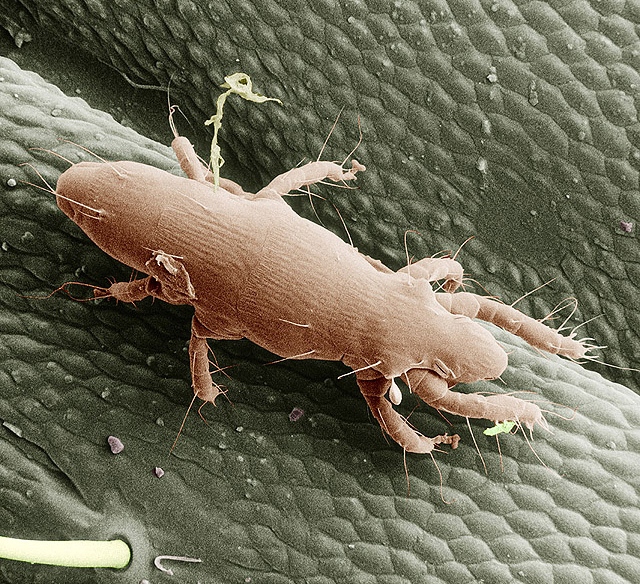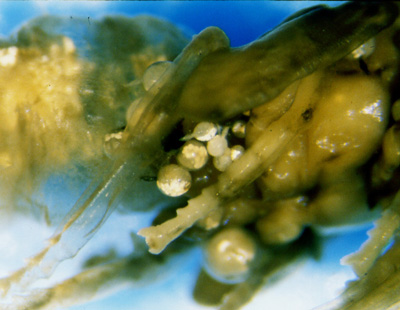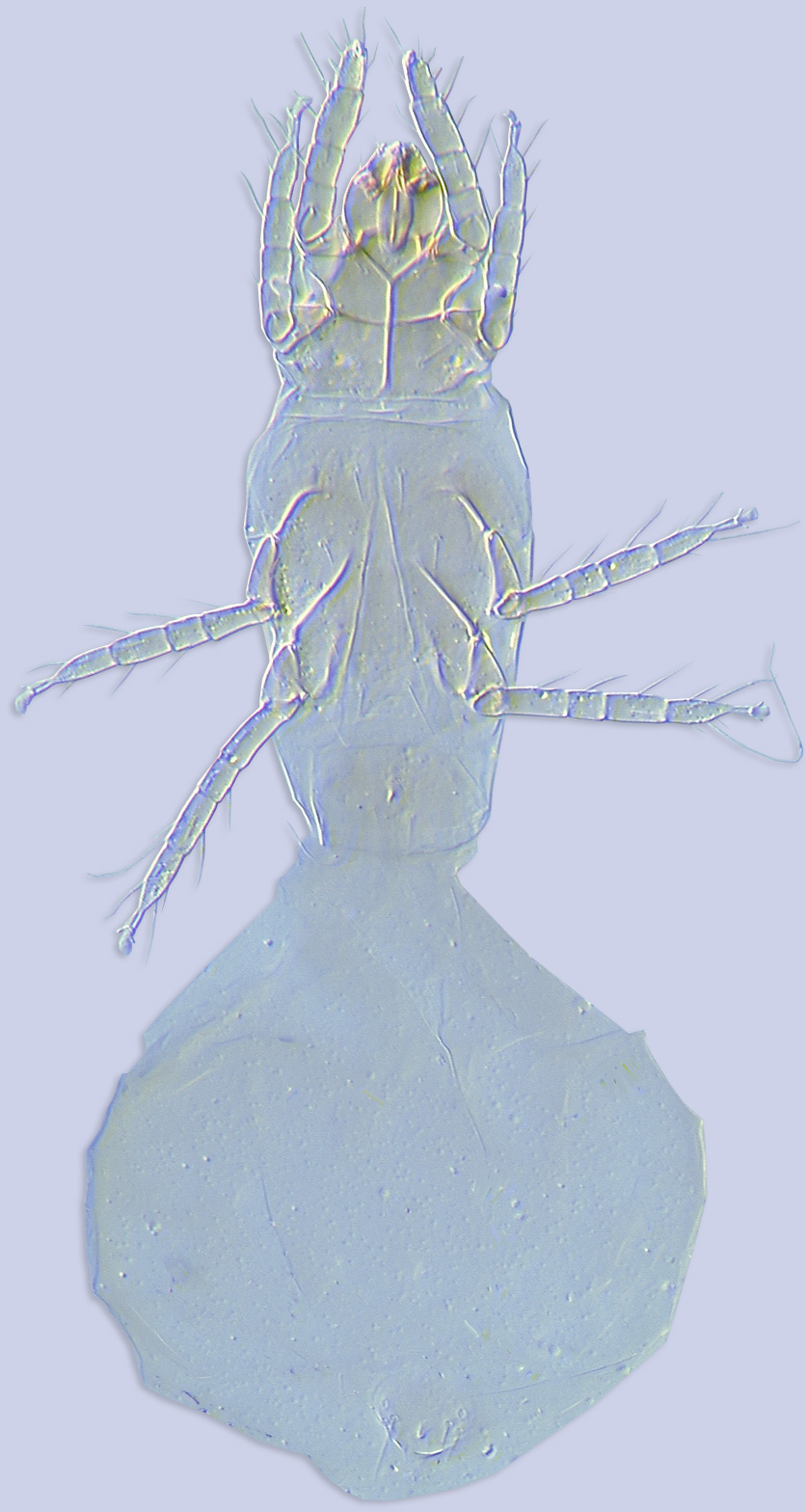Bee Mites : Acari : Acariformes : Trombidiformes
Family Pyemotidae Oudemans, 1937 (1897)
Pediculoididae Berlese, 1897: 1-65 (type genus Pediculoides Targioni-Tozzetti, 1878 = Pyemotes Amerling, 1861)
Pyemotidae Oudemans, 1937: 2837; Krczal, 1957: 431
Type genus Pyemotes Amerling, 1861
Material (show database records).
General Description. This family includes three genera according to Lindquist (1986), two genera with 25 species according to Kethley (1982), and one genus and 24 species according to Zhang et al., 2011. One described species is known from the late Eocene (Khaustov and Perkovsky 2010). Adult females of Pyemotidae are parasites of all developmental stages of holometabolous insects, especially subcortical beetles and stored product insects. When the female sucks the haemolymph of the host her posterior opisthosoma becomes greatly swollen because of developing eggs (physogastric female). Eggs hatch within the female, and adults are the only developmental stage in the family. Adult males emerge first, pierce the swollen opisthosoma with their mouthparts and remain near the opening. Males copulate with females as the latter emerge from the mother's body. The copulation triggers searching behavior in females, which immediately leave to attack a suitable host.
The genus Pyemotes Amerling, was recorded parasitizing bees' larvae, pupae, and, raraely, adults.
Description.
Notes. The family-group name Pediculoididae was proposed by Berlese (1897) for Pediculoides Targioni-Tozzetti, 1878. When it was realized that this genus is a junior synonym of Pyemotes Amerling, 1861, a new family name, Pyemotidae, was proposed (Oudemans, 1937). Although ICZN treats family- and genus-group names independently (i.e., synonymy of a type genus does not affect the validity of the corresponding family-group name), article 40.2 stipulates that substitute family-group names proposed before 1961 is to be maintained if it is in prevailing usage (ICZN, 1999). This is the case for Pyemotidae. The appropriate citation for this family name is Pyemotidae Oudemans, 1937 (1897), see recommendation 40A (ICZN, 1999).
Distribution (show map).
genera associated with bees.
References
Image Gallery
B. OConnor and P. Klimov ©
Created: May 01, 2012
Last modified: 



